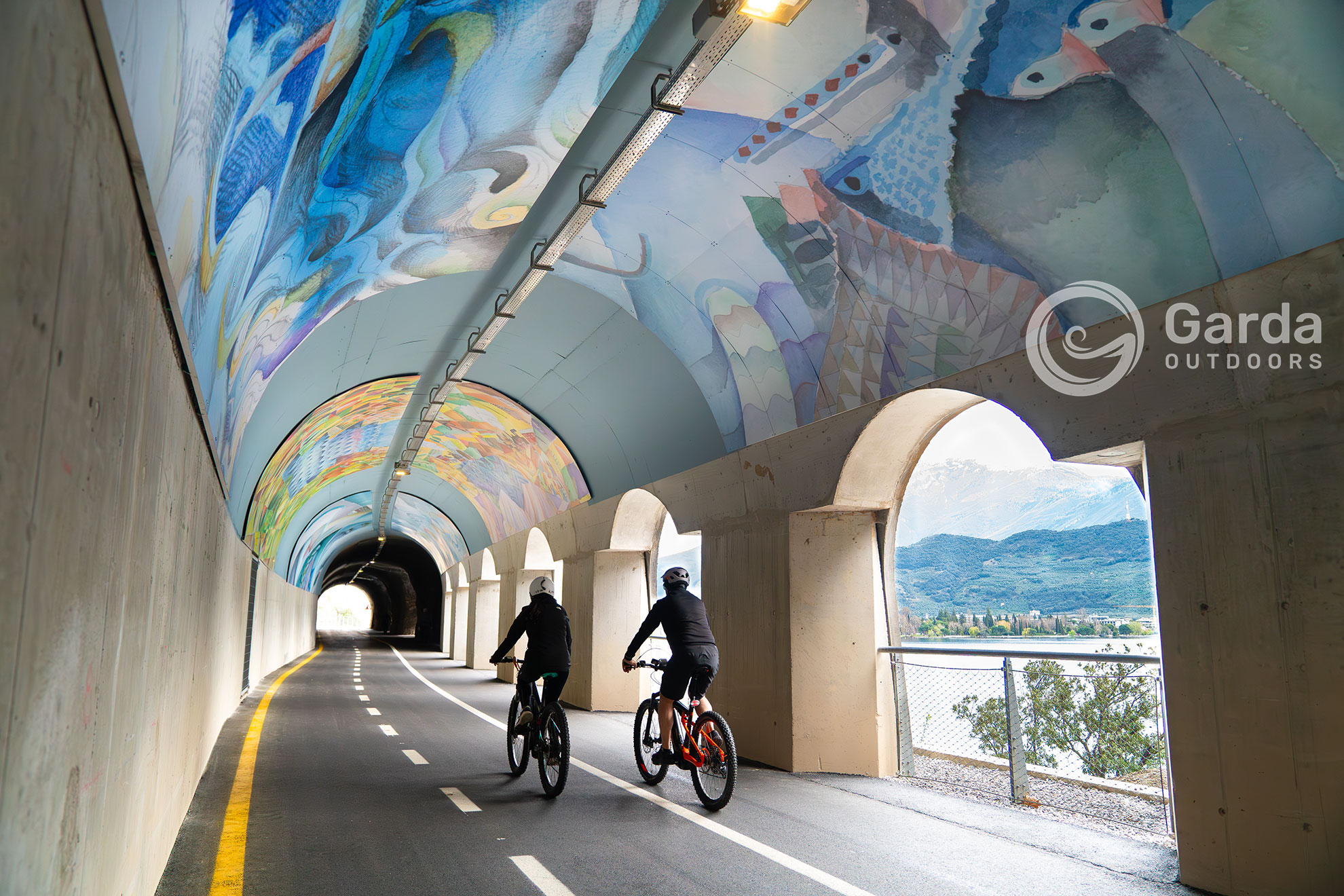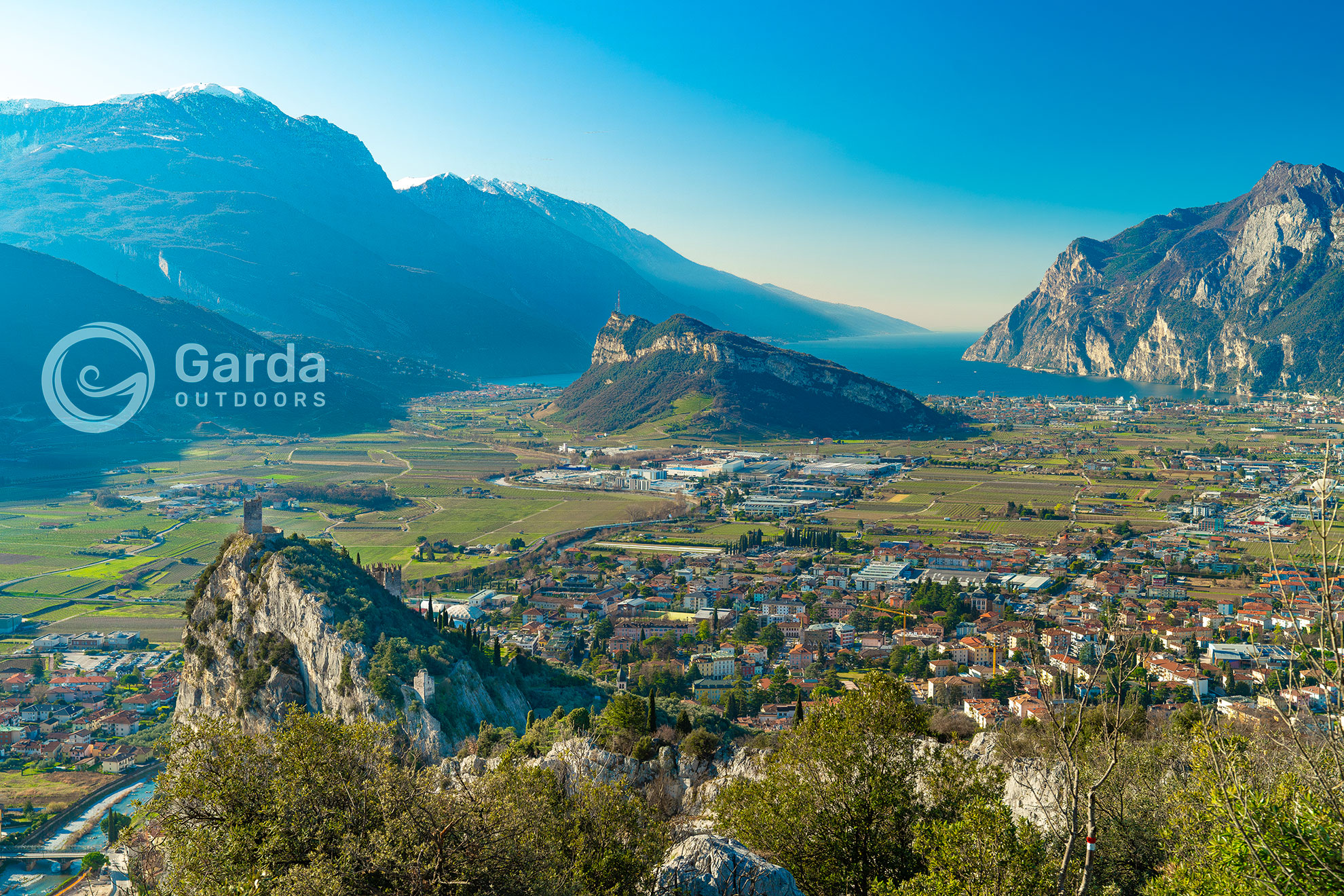One element unites all the castles in the world: the beauty of the landscape. Obviously you will think. But it is precisely from this fixed point that our “virtual journey” begins to discover all the fortresses, the fortresses, the towers that surround the Garda area, aware that, by visiting them in full or in spots, we will certainly have a global look at the landscape attraction. of Lake Garda from every position. A kind of collection of the most beautiful souvenir postcards our eyes can memorize.
Not only that, these castles represent a nice opportunity to visit even in low season or when it rains. Culture doesn’t care about the climate or the umbrella!
We begin our excursus along the entire perimeter of the lake, starting from the Veneto region, continuing the tour clockwise in Lombardy and finally in Trentino, so as to have more order in the geographical references.
The Venetian castles in the province of Verona.
The Scaligero Castle of Malcesine.
The origin of the Scaliger Castle in Malcesine dates back to the end of the first millennium BC. and built by the ancient Lombards. Over the centuries it passed from hand to hand of the various conquerors who modified it according to their needs. From the summer of 1902 it was declared a National Monument: today, its spaces host weddings and events but also a Natural History Museum.
After visiting the museum rooms, you are in the “Goethe room”, a place where you can admire some watercolors made by the painter himself during his trip to Italy: watercolors that give a glimpse of the lake and Malcesine of the time. The entire castle is characterized by an internal courtyard, halls and a keep overlooking the lake from which you can enjoy a breathtaking view. To discover Malcesine sul Garda click here.
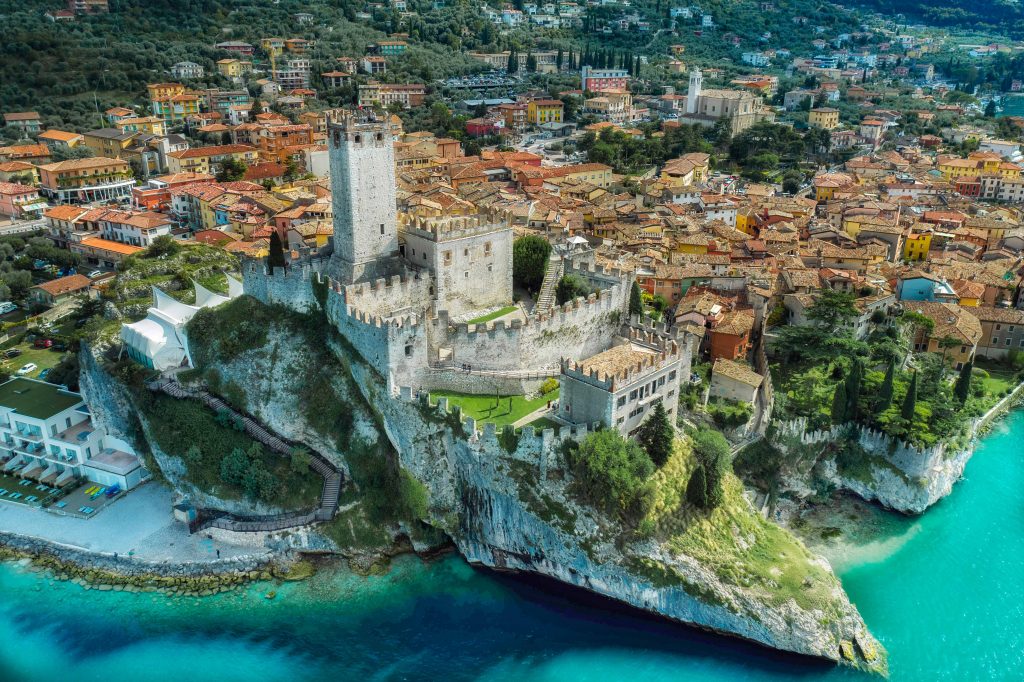
The Castle of Torri del Benaco.
Its origins date back to the 1st century BC. when the Roman legions occupied the Veronese coast of Benaco and their first concern was to fortify the strategic positions between Peschiera and Riva.
In the early eighties it was converted into a museum: the well area, the citrus grove, the caulkers room, the olive and press room, the peach room and other rooms characterize the visit inside the castle.
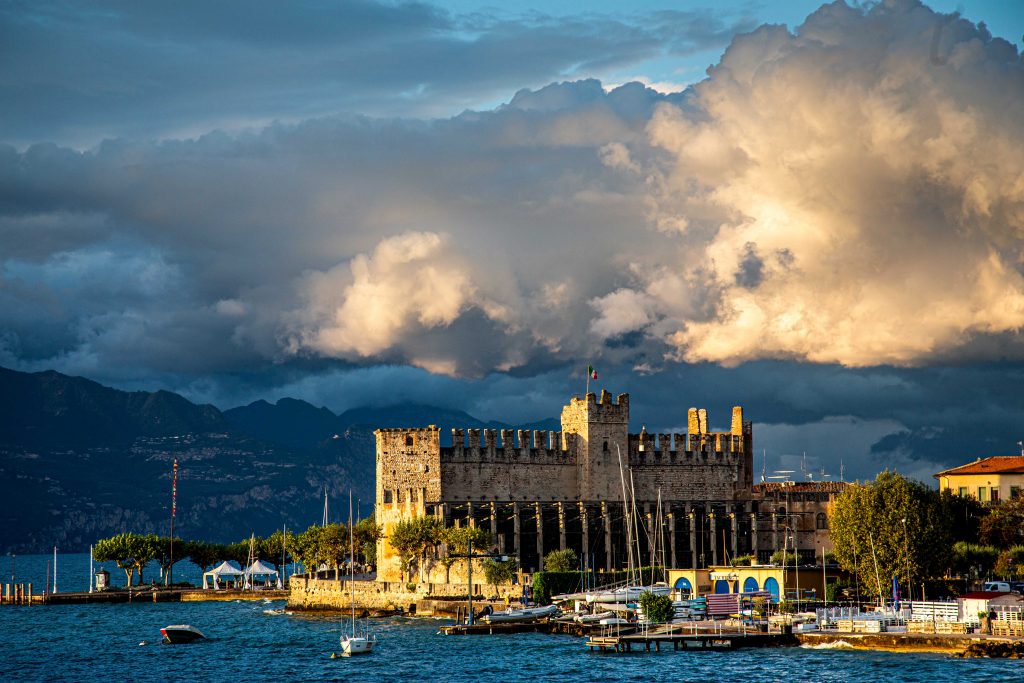
The Scaligero Castle of Lazise.
During the Middle Ages, Cansignorio della Scala decided to build the Scaligero Castle, which belonged to the complex of defensive works in the Verona area prepared by the della Scala and its military port.
In the nineteenth century the castle was bought by Count Burri, who restored it by transforming the small port of the ancient castle into a garden with palm trees, cedars and two huge magnolia trees. He also built the Bernini villa inside, knocking down a large part of the town walls.
These walls were protected by a deep moat and there were 3 access gates: Porta San Zeno, intended for the population and the transit of goods, Porta Cansignorio and Porta del Lion, both used for military purposes. The latter during the age of the Serenissima remained almost always closed to prevent smuggling.
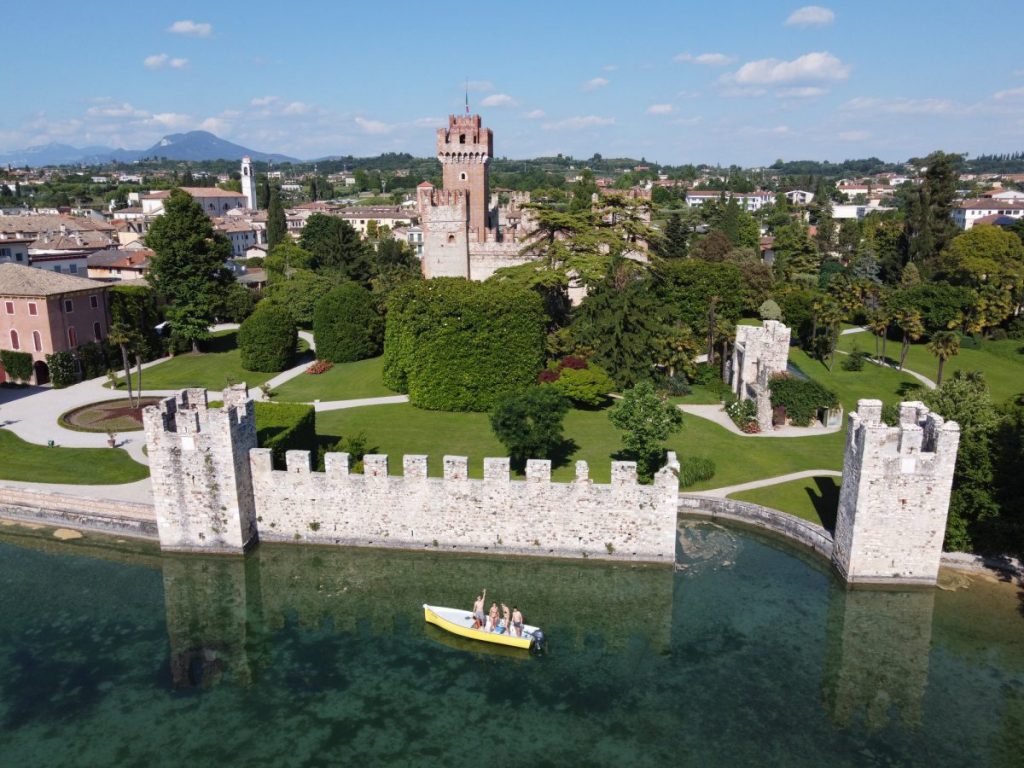
The Scaligero Castle of Valeggio sul Mincio.
The Scaligero Castle, from the top of the hill on which it stands, dominates Valeggio and the whole valley of the Mincio, while maintaining the suggestive grandeur of the medieval fortifications of the fourteenth century. The passage of time, wars and human neglect have progressively damaged this ancient monument. Only in recent decades has the work of protecting and reconstructing our very particular historical heritage begun. Currently, during the summer, open-air entertainment and cinema evenings are organized in the evocative setting of the internal courtyard.
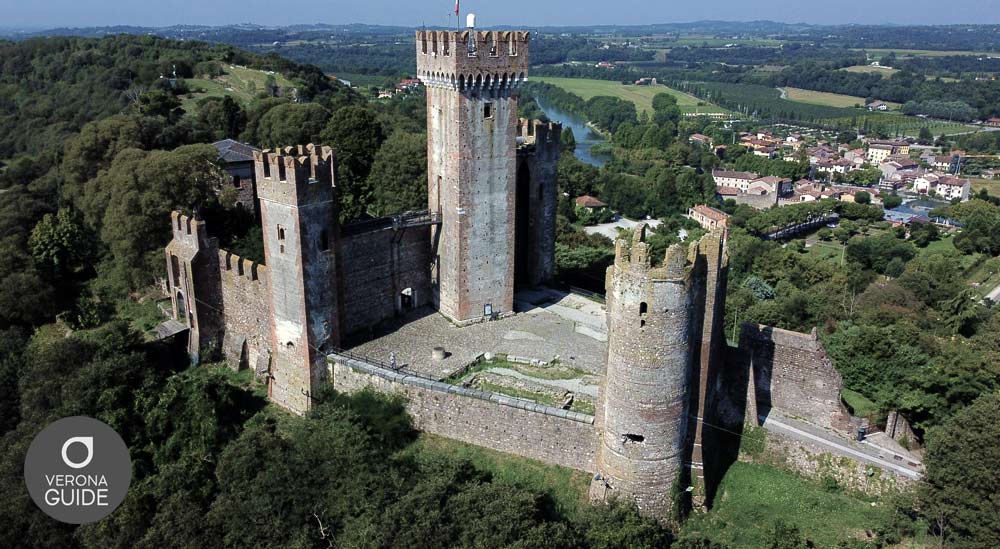
The Castelvecchio museum in Verona.
The Castelvecchio Museum is one of the most important museums in the city of Verona, mainly dedicated to Italian and European art. It was restored and set up between the sixties and seventies by the famous architect Carlo Scarpa, of which it became one of the most complete interventions, distributed in about thirty rooms and related sectors: sculpture, Italian and foreign painting, ancient weapons, ceramics, goldsmithing, miniatures and the ancient city bells. From the bridge of the same name, which can be walked freely, it is possible to enjoy a splendid view of the Adige river.
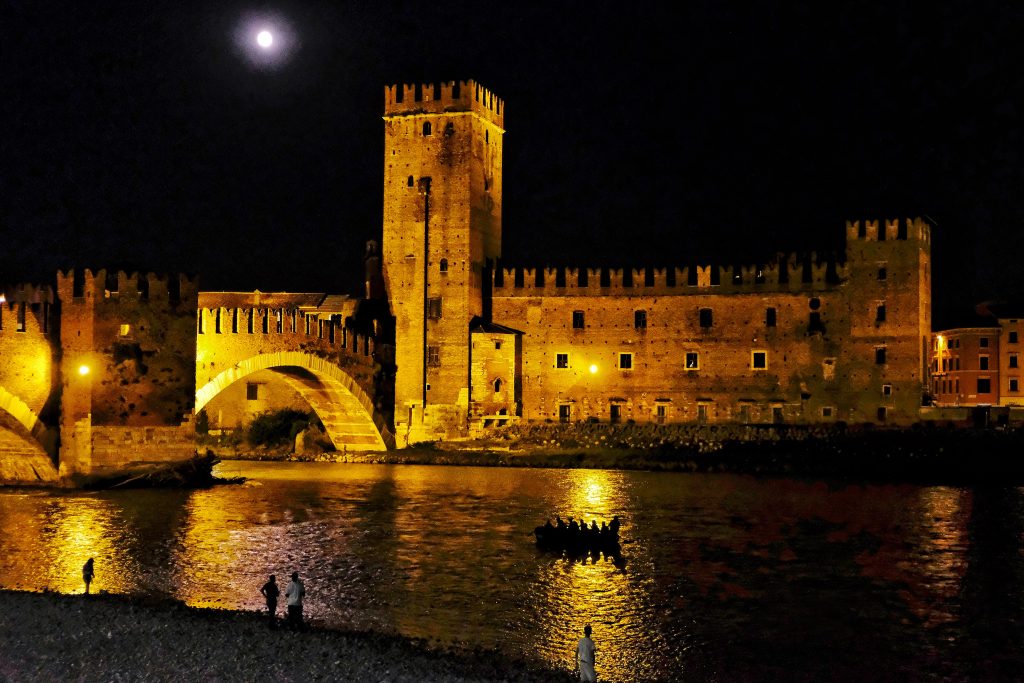
The Scaligero Castle of Villafranca di Verona.
The Scaligero Castle of Villafranca, of medieval origin, was built starting from 1199, after the battle of Ponti dei Molini (Mantua), and completed in 1202. In the 14th century it became part of the walls known as Serraglio, erected by the Scaligeri. The wars in subsequent eras destroyed most of it, but it was rebuilt thanks to the commitment of the Serenissima. Today it is the evocative venue for outdoor shows and concerts.
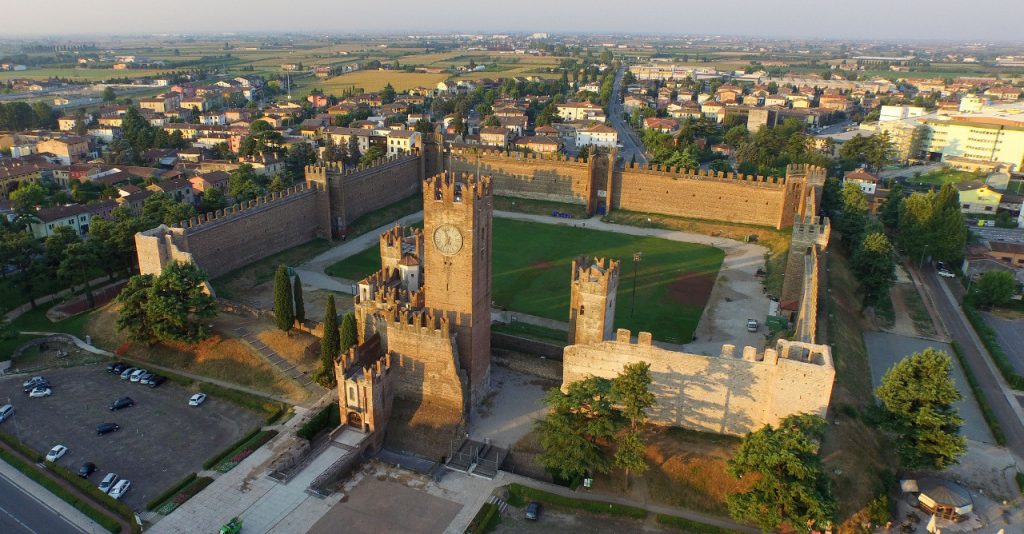
The Castle of Montorio Veronese.
The medieval Castello di Montorio rises on the “Preafitta” ridge between Valpantena and Val Squaranto; at its foot lies the town of Montorio Veronese, known for its numerous springs and characteristic waterways. Its origins date back to the 10th century and for over five hundred years it was the scene of important battles and significant historical events. Of the probable eight towers of which it was made up until its partial demolition in 1859 by the Austrian army, only four remain.
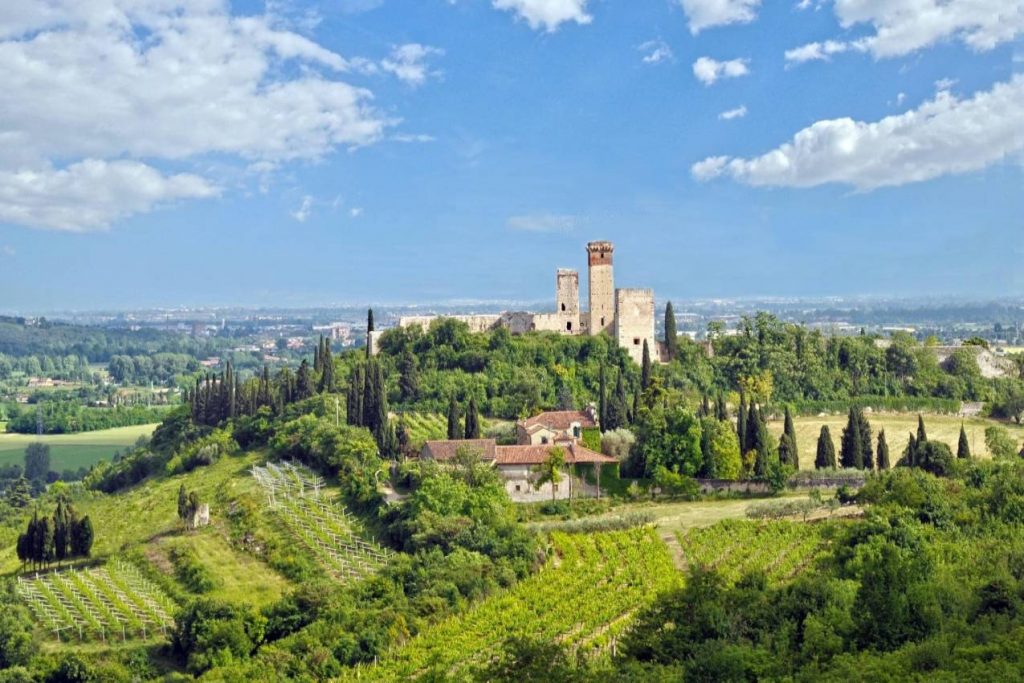
The Soave Castle.
The Castle is a typical military artifact of the Middle Ages and represents one of the best examples of a castle structure in the Veneto. The fort rises majestically with a high central tower (“keep”), around which the turns of the walls gradually develop, separating three courtyards and a small hanging courtyard. The walls, therefore, descend to embrace the whole beautiful medieval village.
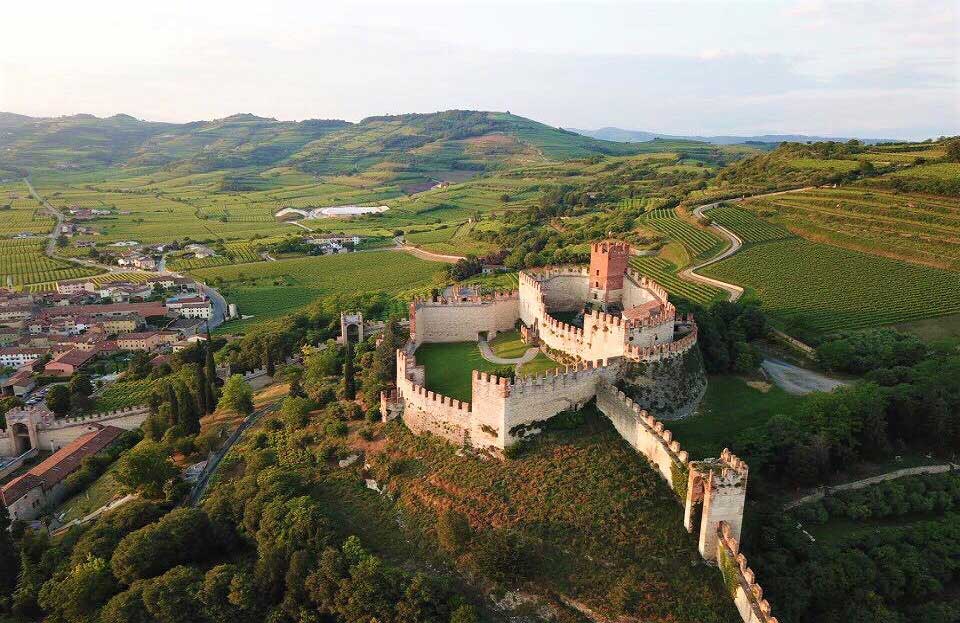
The Lombard castles in the province of Mantua.
Palazzo Ducale and Castle of San Giorgio in Mantua.
Extraordinary testimony of the history of Mantua, of the Italian Renaissance and of European art between the Middle Ages and the Baroque, the Museum Complex of Palazzo Ducale and Castello di San Giorgio ranks among the most prestigious cultural assets of the UNESCO site. Defined as a city-palace by virtue of its articulated spatial configuration, Palazzo Ducale is a vast architectural palimpsest that occupies an area of about 35,000 square meters with over 1,000 rooms. Among the masterpieces kept within its walls we can mention the cycle of late Gothic frescoes painted by Pisanello at the beginning of the fifteenth century, the Camera Picta by Andrea Mantegna, a synthesis of the principles of the Renaissance, and the Baroque paintings by Pieter Paul Rubens. Today as in the past, by virtue of its prestige, Palazzo Ducale constitutes a formidable collector of works and cultural events, with exhibitions ranging from ancient to contemporary art.
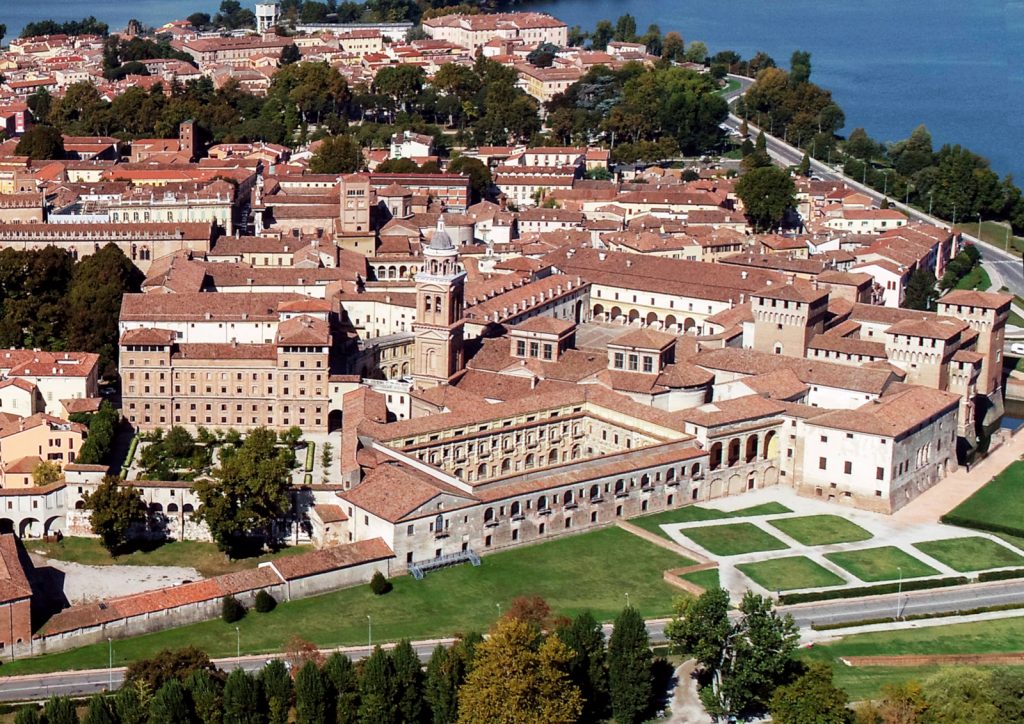
The Scaligero Castle of Ponti sul Mincio.
The Scaligero Castle, built in the period between 1260 and 1276, the year in which it is mentioned for the first time in the documents; it is included in the defensive constructions of the Scaligeri Lordship, to defend the territory and to observe the vast valley preceding Lake Garda.
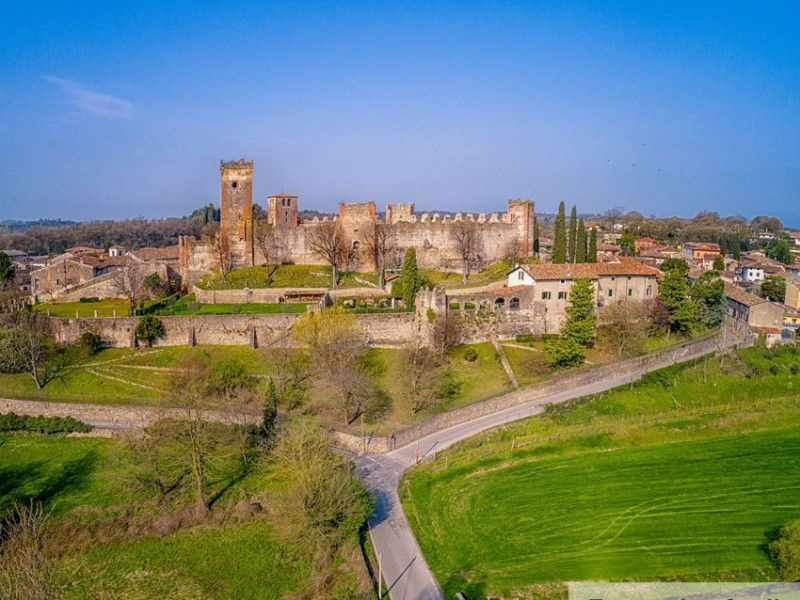
The Castle of Monzambano.
Perched among the morainic hills of the lower Garda and overlooking the Mincio valley, stands the medieval castle of Monzambano, which dominates the hill with its irregular crest. The structure is today one of the most intact and complete examples of Mantuan castle architecture. For more info click here.
The Cerlongo Castle.
The Cerlongo Castle, also known as Villa Magnaguti, is an ancient stronghold located in Cerlongo, a fraction of the municipality of Goito, in the province of Mantua, which preserves the original layout, as well as some medieval buildings and defensive works, including which the three towers and the perimeter walls.
The Castle of Cavriana.
The castle of Cavriana, in the province of Mantua, was a military structure probably founded in the 11th century. To date, the castle, partially restored and consolidated in 2004, remains part of the walls and the tower, transformed into a bell tower.
The Castle of Castellaro Lagusello.
The castle is an ancient stronghold dating back to the thirteenth century located in the center of Castellaro Lagusello, which preserves the original urban plan, as well as some medieval buildings and defensive works, including the four towers and the perimeter walls to defend the beautiful village that also has a nature reserve and a heart-shaped pond.
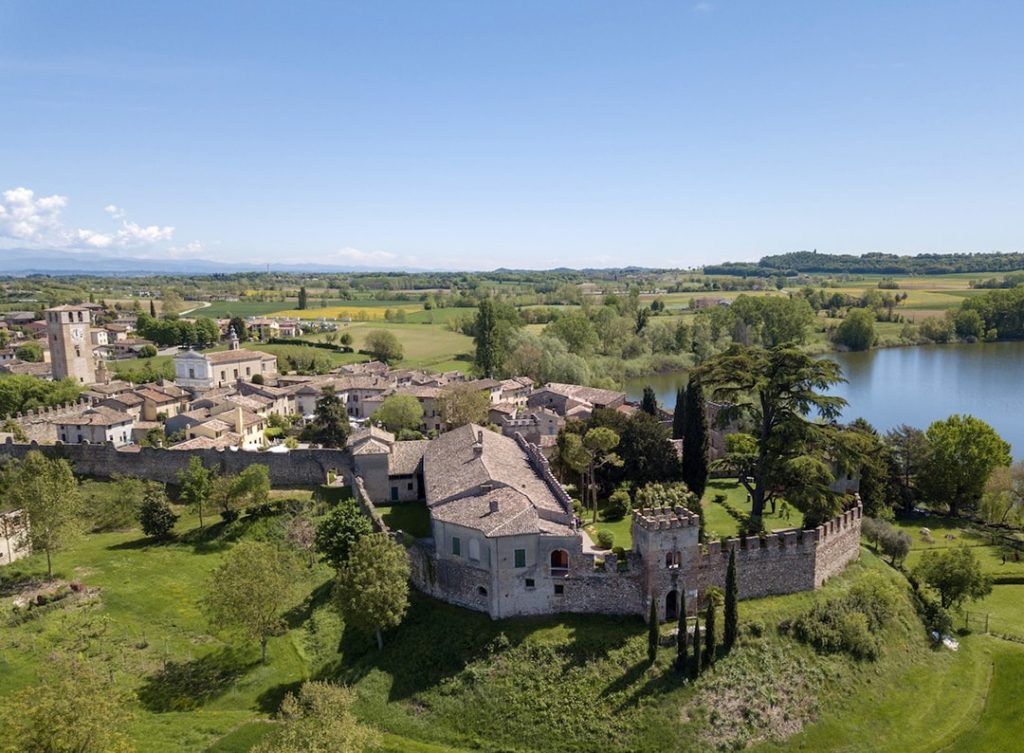
The Fortress of Solferino.
On top of the highest hill in the picturesque village of Solferino, stands a majestic 23-meter-high building dating back to 1022. Defined as “The Spy of Italy” due to its strategic position, it is surrounded by a large park.
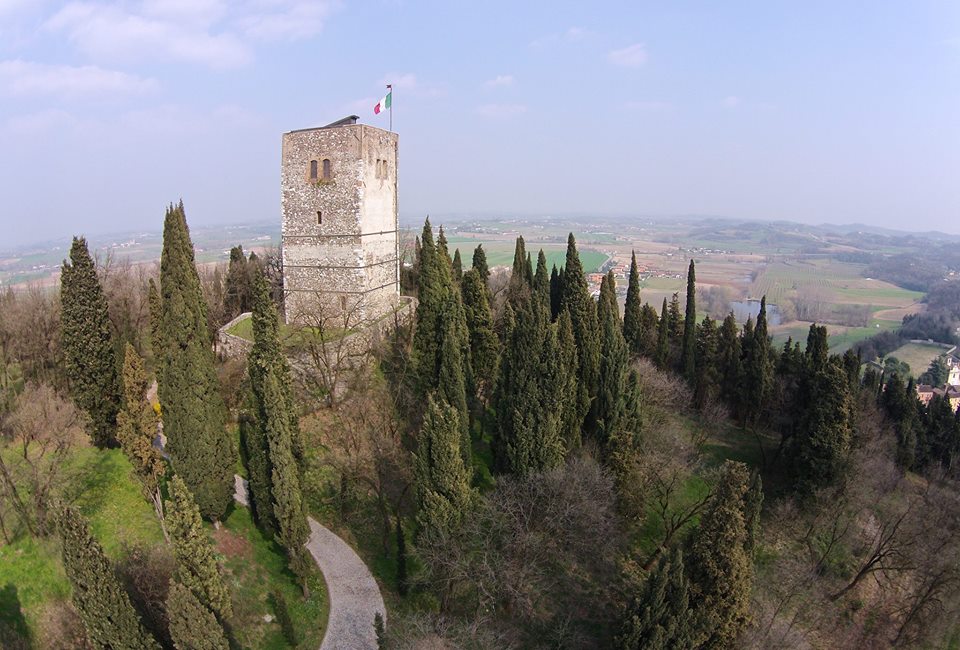
The Castle of Castiglione delle Stiviere.
The castle of Castiglione delle Stiviere is a military structure probably built in the 9th century on a pre-existing Roman castrum on the top of a hill overlooking the town. It was the residence of the Gonzaga Lords of Castiglione.

The Lombard castles in the province of Brescia.
The Castle of Pozzolengo.
The town is dominated by the mighty Castle, built on the top of Mount Fluno around the year 1000, inside which there is a fortified medieval village still inhabited today, and from which you can admire the Don Giussani Park below.
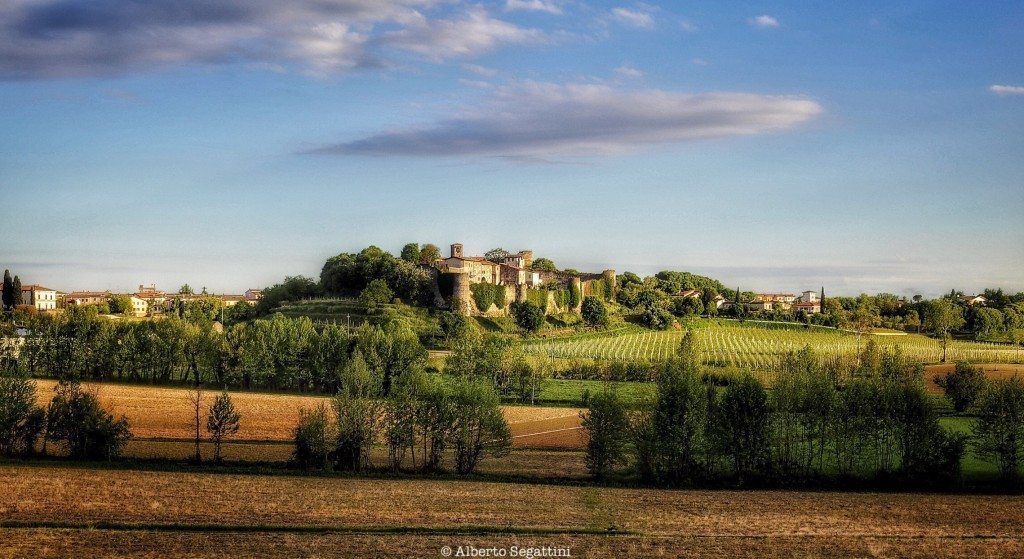
The Scaligero Castle of Sirmione.
The Sirmione castle is also known as the Rocca Scaligera: built around 1278 by Mastino I della Scala, lord of Verona, on Roman remains. The visit allows access to the courtyards through an internal portico where a Roman and medieval lapidary is set up; the possibility to climb the keep and the walkways of the walls from which you can admire the suggestive dock, an ancient refuge of the Scaligera fleet and, of course, a beautiful panorama.
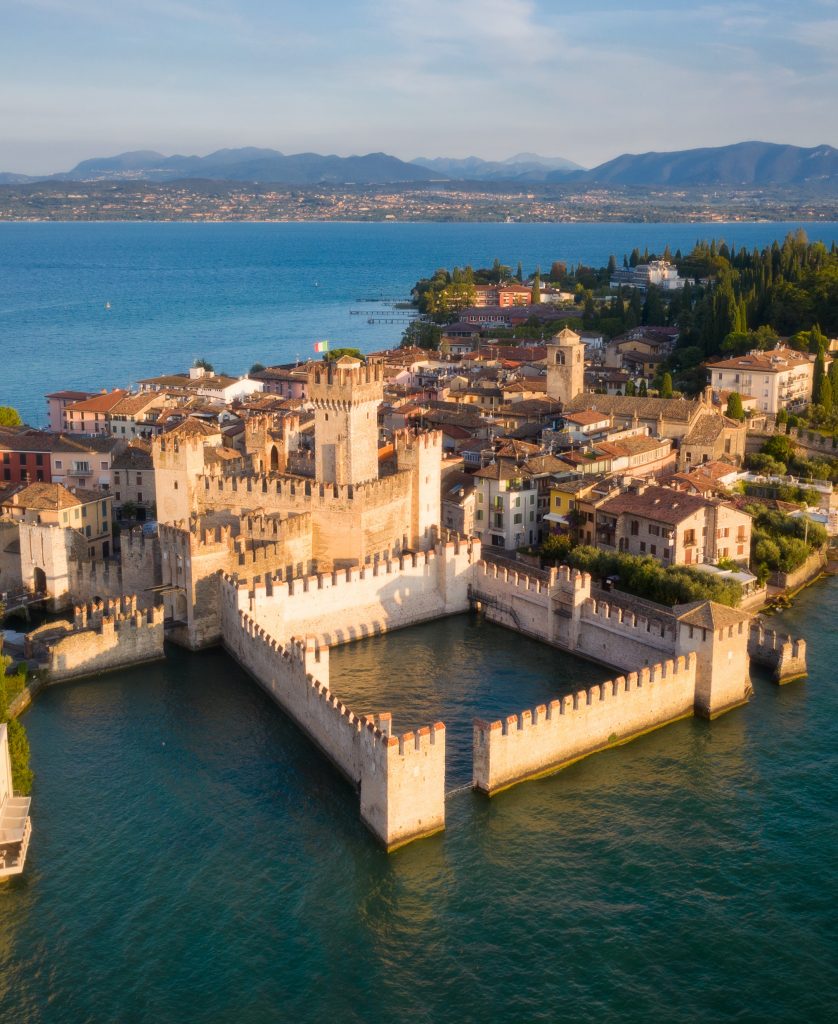
The Castle of Desenzano.
The Castle of Desenzano stands on a rock from which you can admire the village and the lake. It was built in the communal era and strengthened later when, in the sixteenth century, it contained 120 houses and a church dedicated to St. Ambrose within its walls. Today it is also a venue for ceremonies and events.
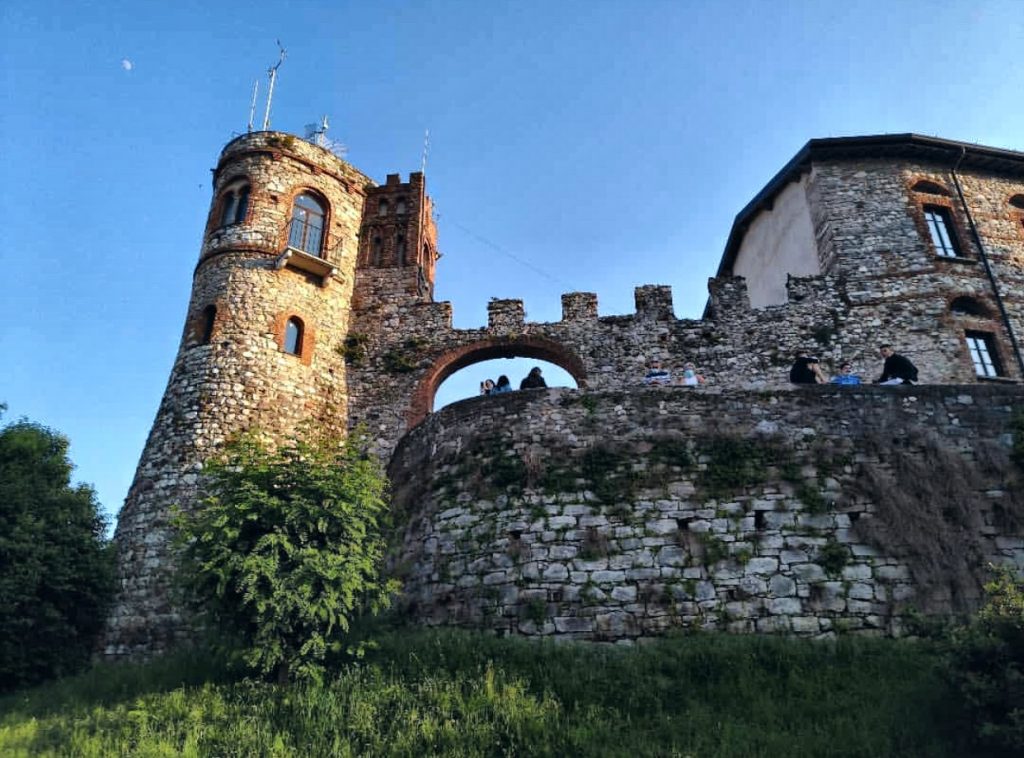
The Bonoris Castle in Montichiari.
Located on the Colle di San Pancrazio in Montichiari, in the province of Brescia, Castello Bonoris was built at the end of the 19th century on the remains of an ancient defensive fortress, at the behest of Gaetano Bonoris, born into a rich family of Mantuan origin and linked to the court Savoy.
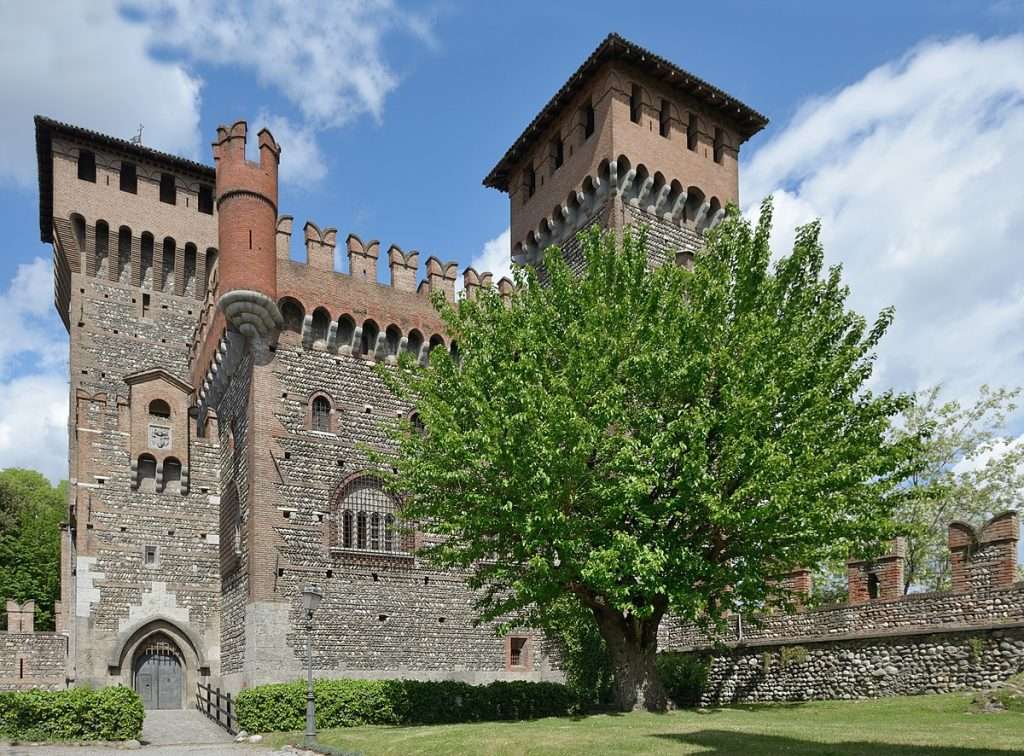
The Fortress of Lonato.
The Castle of Lonato, commonly known as Rocca, stands on the top of one of the reliefs of the morainic amphitheater which dominates, on one side, the southern part of Lake Garda and, on the other, the historic center of the town. The castle is accessed from its southern side through a door and a drawbridge which can be reached along the avenues and pedestrian paths of the large park that connects the Casa del Podestà to the Rocca.
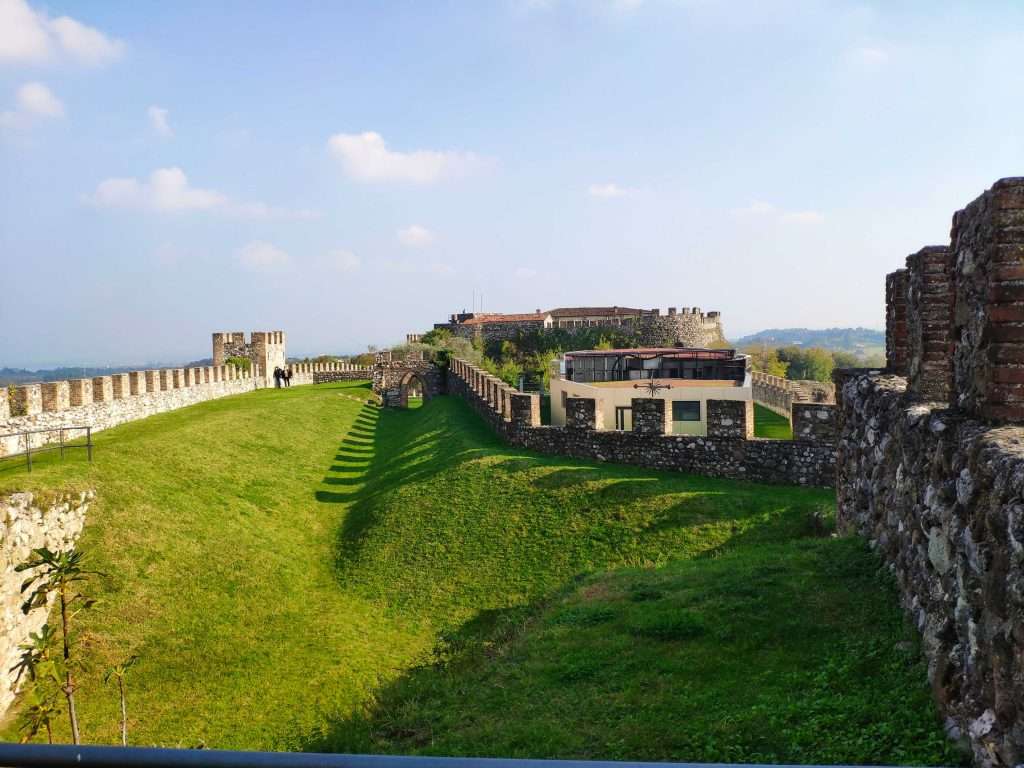
Padenghe Castle.
Located in a splendid panoramic position, the Padenghe castle, dating back to the year 1000 and considered the oldest in Valtenesi, has almost entirely preserved its original structure. You can admire the three towers, the largest of which, over 21 meters high, is located above the entrance. Inside the walls, which can be accessed via an arched portal with a drawbridge, there are some houses divided by two streets.
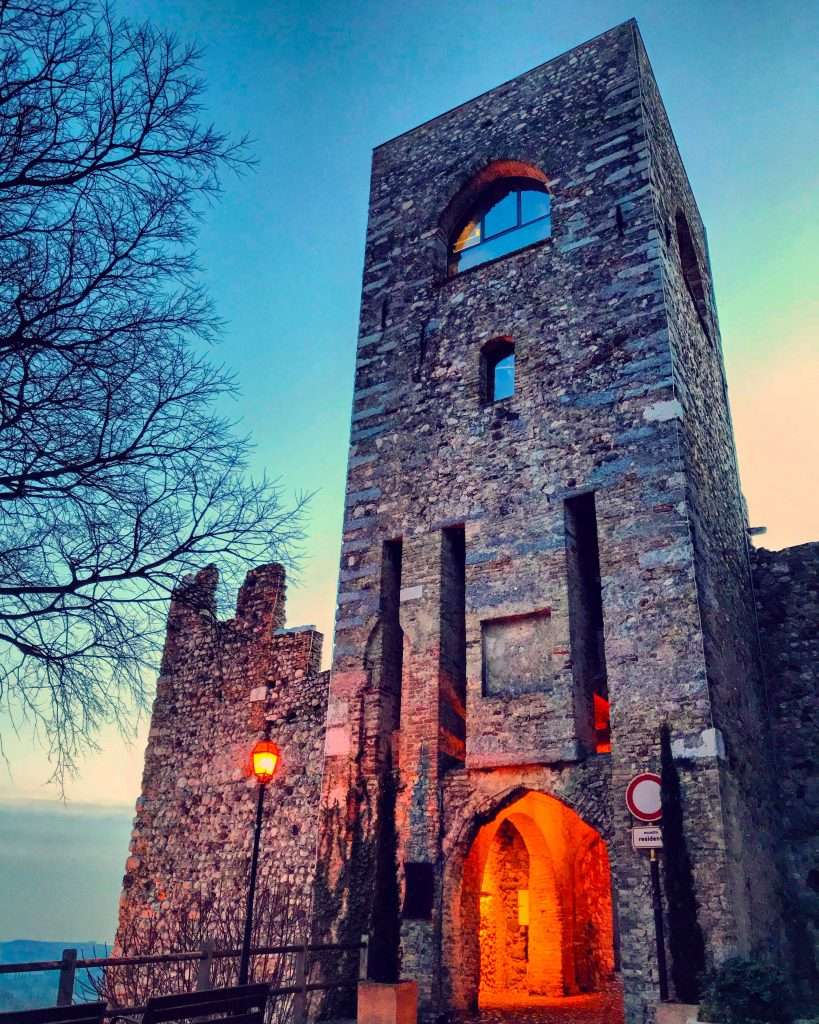
The Castle of Moniga del Garda.
Among the fortified villages built on the Garda hills in the 10th century, the castle of Moniga is one of the best preserved, both for what concerns the plant and for the wall structures.
Since there has never been the presence of a noble palace and never a local gentleman has lived there, it is correct to define it as a castle-shelter (from the Latin receptum = refuge): a simple aggregation of houses where the population of the surrounding village took refuge. in case of danger, taking with him what is necessary for his sustenance.
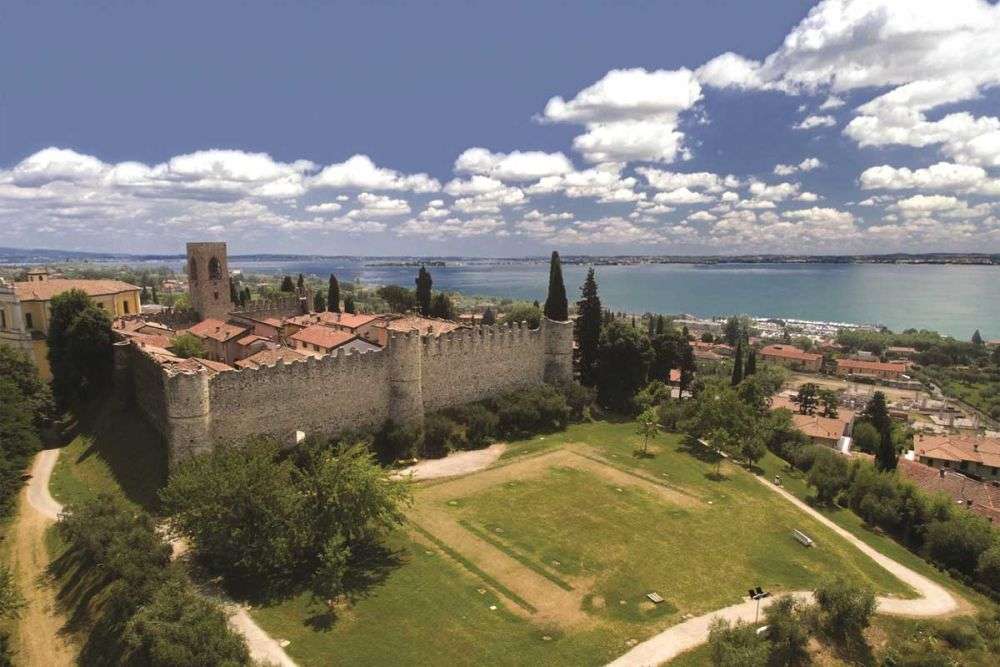
The Castle of Soiano del Lago.
The Soiano del Lago castle is a castle that dominates the historic center of the town. Located in a strategic point, it enjoys a panoramic view of the moraine hills of Valtenesi and Lake Garda. In the summer season the ancient walls of the castle become an evocative place for events, shows and historical re-enactments.
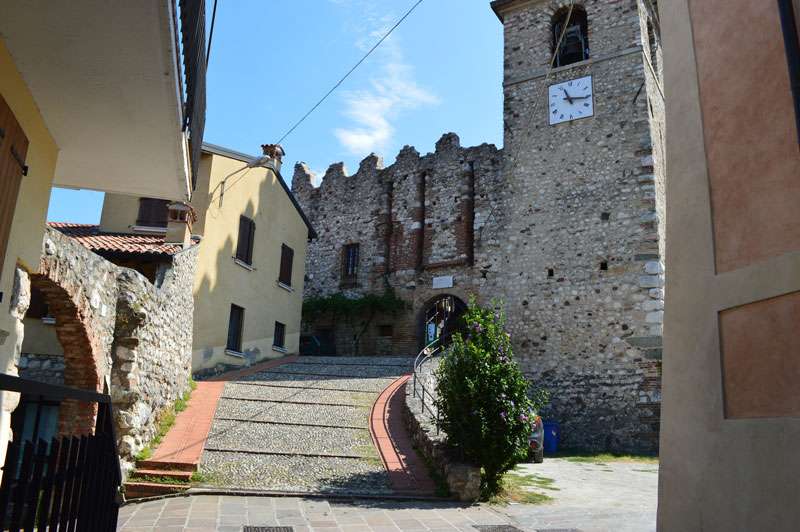
The Castle of Polpenazze del Garda.
The castle of Polpenazze del Garda dominates the historic center of the town. Located in a strategic point, it enjoys a panoramic view of the moraine hills of Valtenesi and Lake Garda. Piazza Biolchi in its entirety is often described as the most beautiful terrace on Lake Garda.
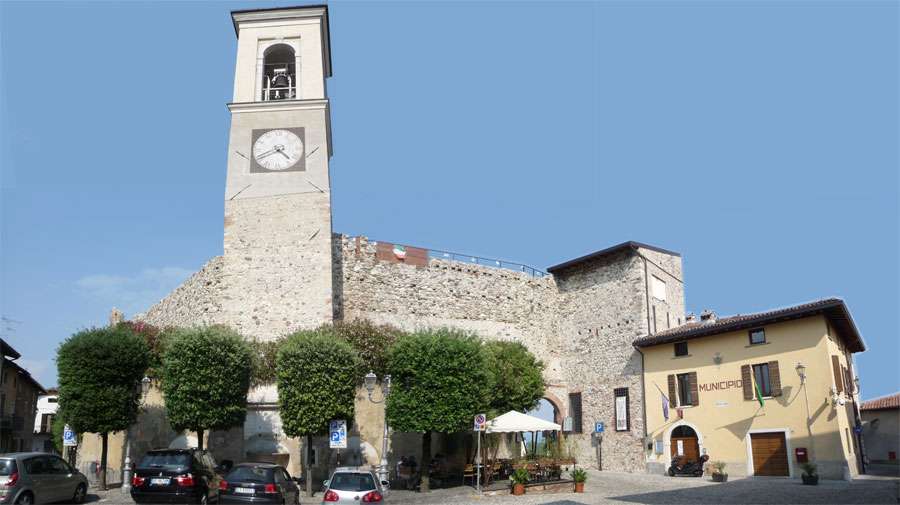
Brescia Castle.
Perched on the Cidneo hill, in a naturalistic context that represents one of the “green lungs” of the city, the Castle is one of the most fascinating fortified complexes in Italy, where the signs of the various dominations can still be read today. The central keep, the imposing crenellated walls and the tower tell of a Visconti influence, while the mighty bastions and the monumental entrance with drawbridge testify to the power of the Serenissima, which ruled the city for more than four centuries.
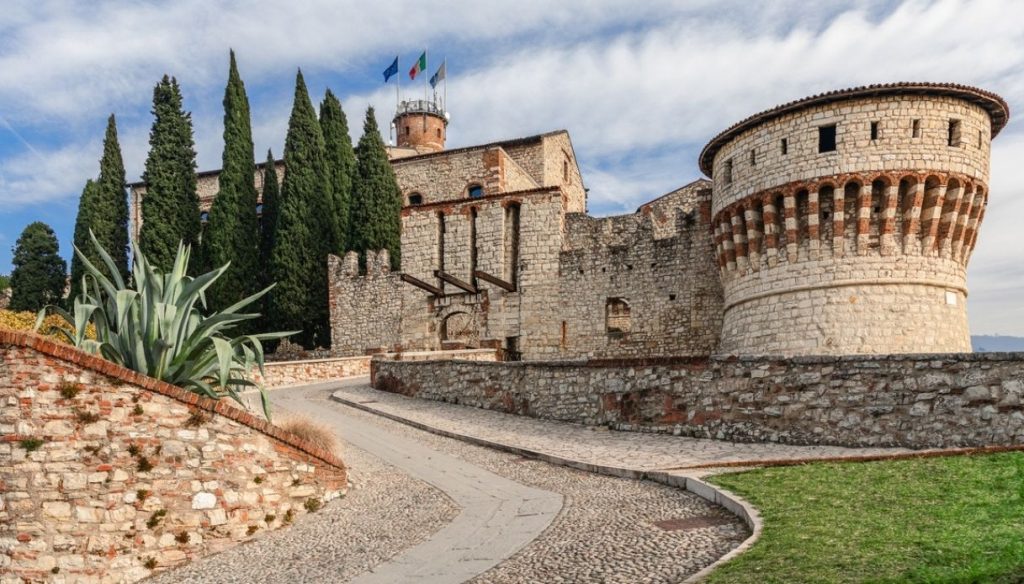
You may also be interested in a splendid walk in The Rocca of Manerba del Garda.
The Trentino castles in the province of Trento.
Penede Castle in Nago-Torbole.
The name Penede derives from the pre-Roman toponym pen (crest, peak) which designates the spectacular rocky promontory that extends from the slopes of Mount Baldo towards Lake Garda, on which the castle of the same name was built. It can be reached by a forest road preceded by a pole, and then by a footpath.
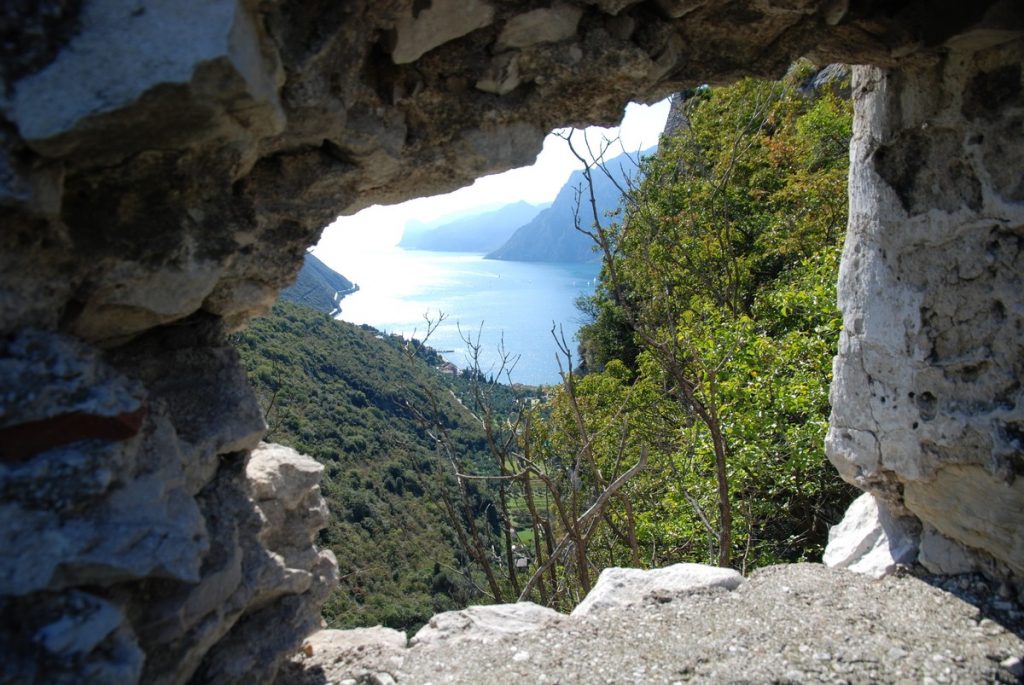
The Rocca of Riva del Garda and the MAG Museum.
The Rocca di Riva del Garda is a medieval fortress located on an artificial islet on the shore of Lake Garda and is one of the two locations of the MAG – Alto Garda Museum.
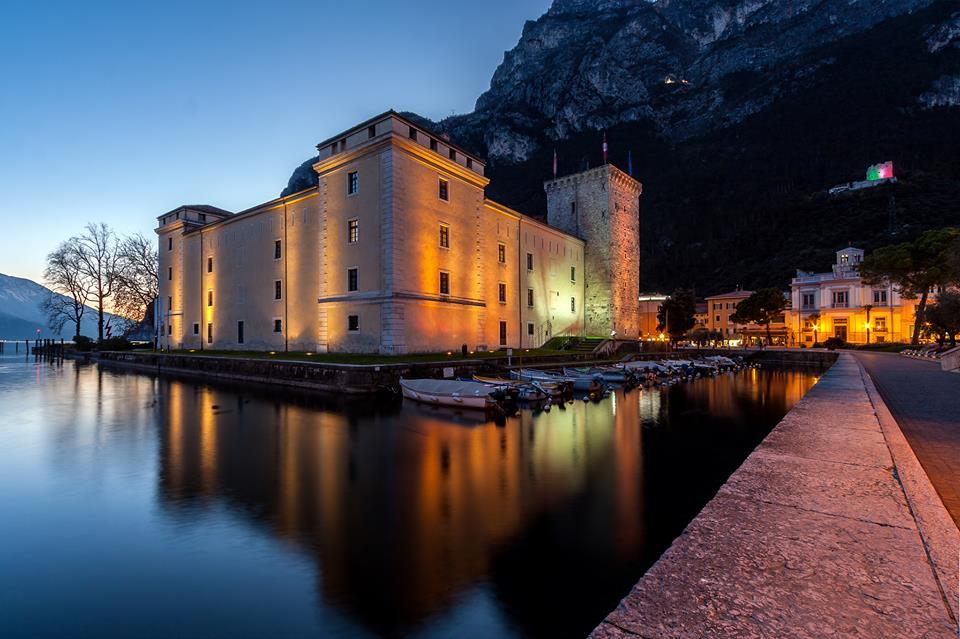
Arco Castle.
The Arco castle is a system of buildings and fortifications extending over 23,000 square meters on the steep slope of a rocky cliff overlooking the town of Arco and, towards the east, falls with sheer walls up to 170 meters high on the Sarca plain. It can be reached with a beautiful walk and enjoys a breathtaking view!
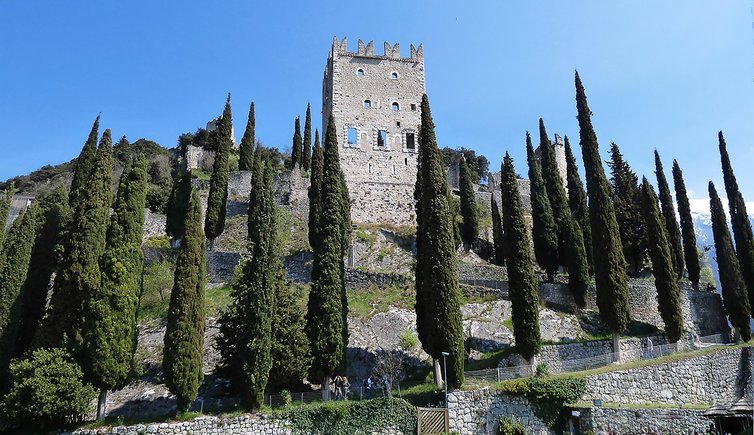
Castel Campo in Fiavè.
Castel Campo is a castle with very ancient origins, which today is owned by the Rasini family, who live there and use it for numerous cultural, social and agricultural initiatives. These are in particular theatrical performances and concerts by great musicians and orchestras. Not only that, it also organizes summer camps for children and teenagers with serious illnesses and their families.
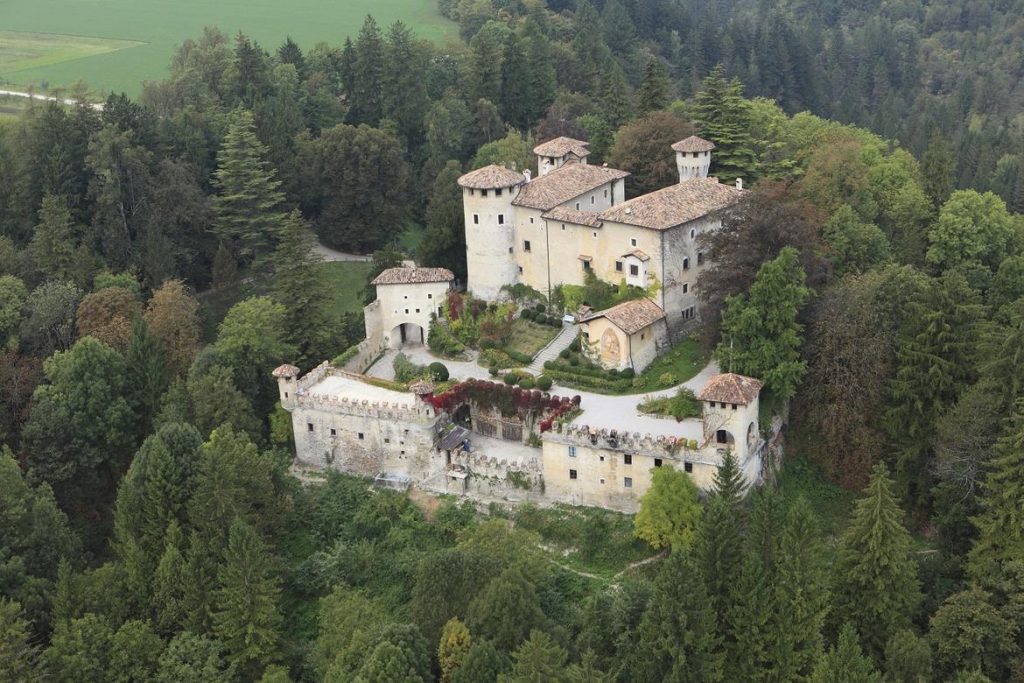
The Castle of Stenico.
The castle was a possession of the Prince Bishops of Trento from the 12th century, it served as the seat of the captain who administered the surrounding territory. In addition to the chapel of San Martino with 13th century frescoes, the sequence of furnished rooms, an archaeological section and a valuable collection of inlaid furniture, frescoes, ancient weapons from the Castello del Buonconsiglio Museum in Trento, of which the manor is branch office.
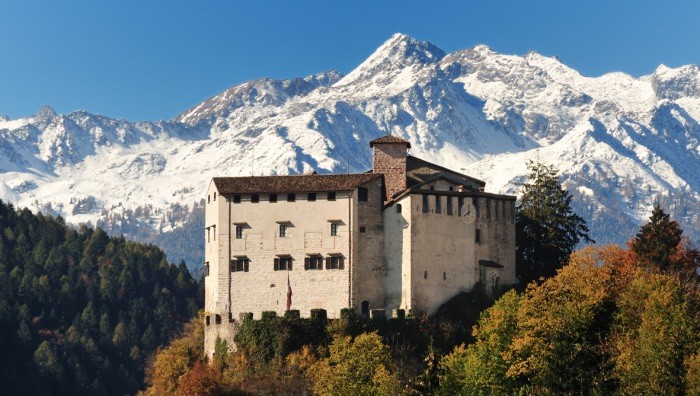
Toblino Castle.
Castel Toblino is one of the most famous castles in Trentino and owes its fame to the singular position and the beautiful environment that surrounds it. It was born on a rocky spur detached from the mountain above and ended up in the lake of the same name. Over the years the water level dropped and is now connected to the shore as a peninsula.
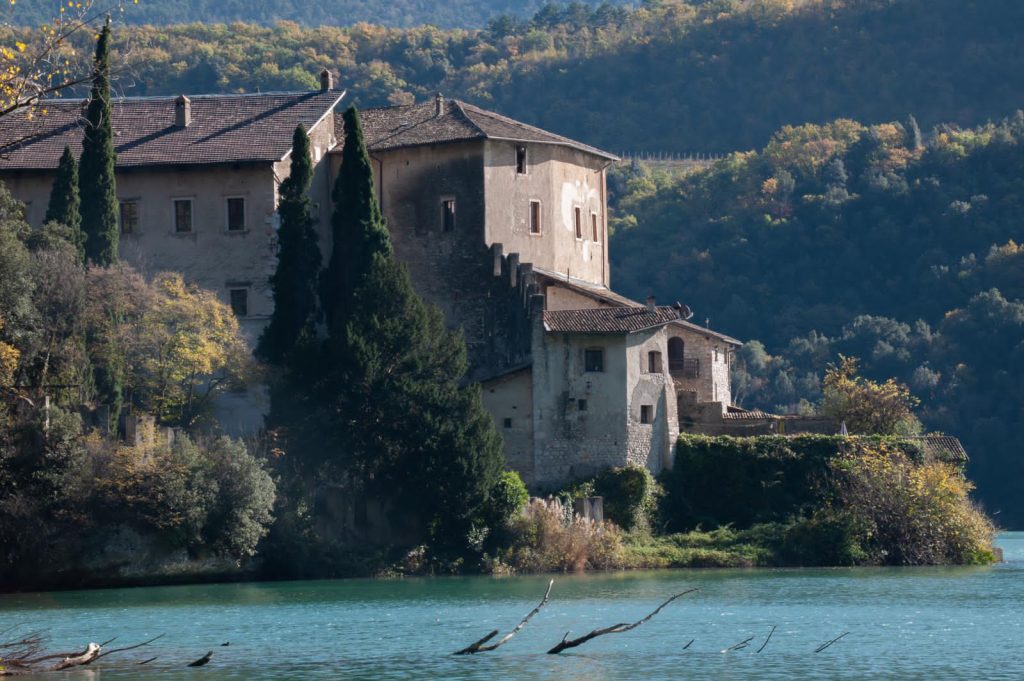
The Castle of Drena.
The castle of Drena stands at the top of a rocky hillock in a dominant position on the territory north of the Alto Garda basin, characterized by the imposing glacial landslide known as the “Marocche di Dro”: a continuous expanse of large stones that blocks the valley. A truly impressive panorama.
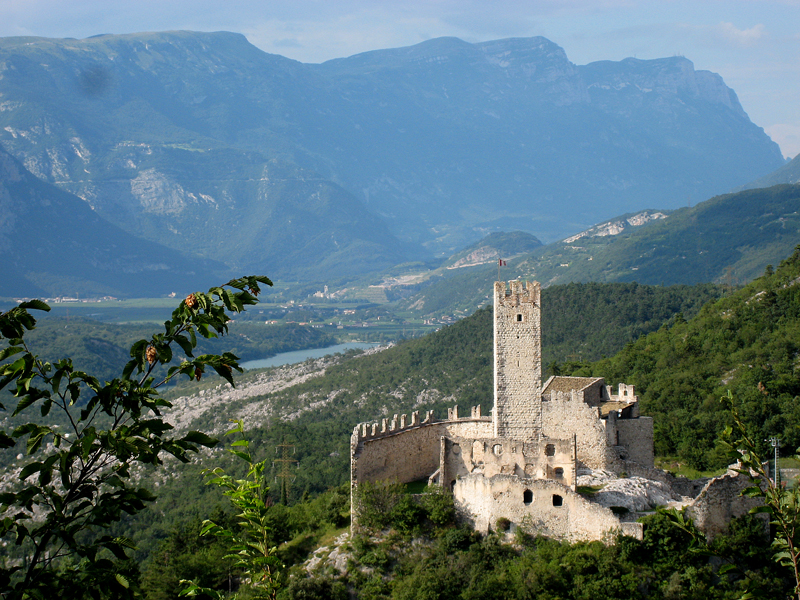
The Buonconsiglio Castle in Trento.
Seat of the bishop princes since 1255, the Buonconsiglio Castle in Trento is the most important historical and artistic monument in the region. The Magno Palazzo, one of the most sumptuous Renaissance residences in Italy, was added in the sixteenth century to the ancient medieval fortress, Castelvecchio, refined by a refined loggia.
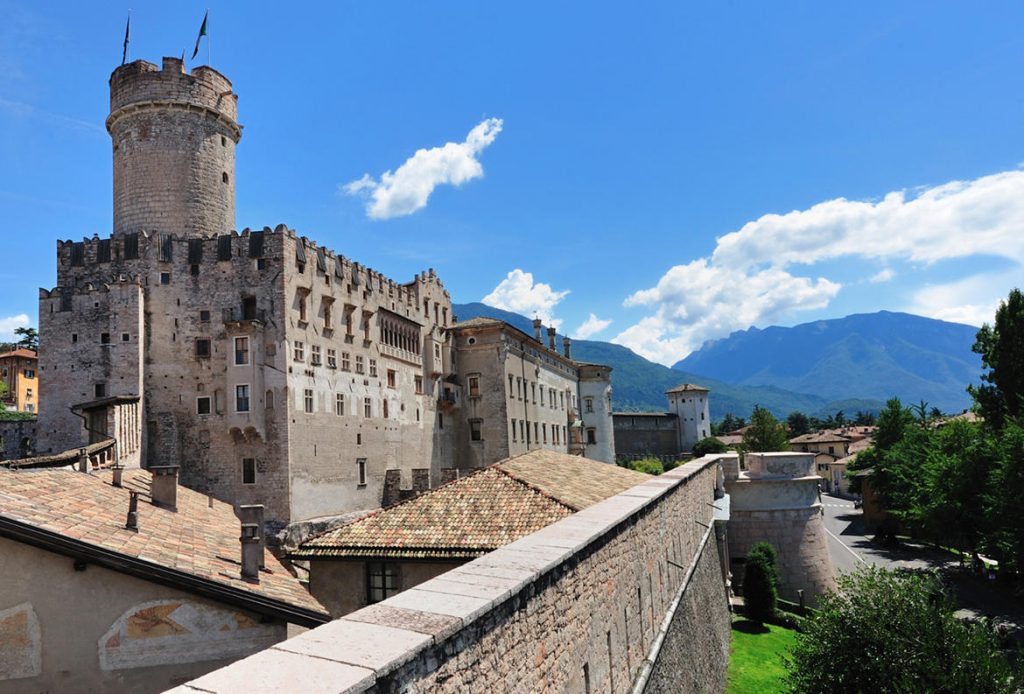
Castel Pergine in Pergine Valsugana.
Castel Pergine enjoys a privileged position on the Tegazzo hill. Formerly a Roman settlement, it was known as the gateway to Valsugana. In 2018, the Castelpergine Onlus Foundation purchased Castel Pergine from the Swiss Oss Ringold family and is the first collective property in Italy. The foundation annually organizes an exhibition and cultural events with music and theater. Inside there is also a hotel with a restaurant.

Beseno Castle in Besenello.
Beseno Castle is the largest fortified structure in Trentino-Alto Adige. It is currently one of the headquarters of the museum complex of the Provincial Museum of the Buonconsiglio Castle.
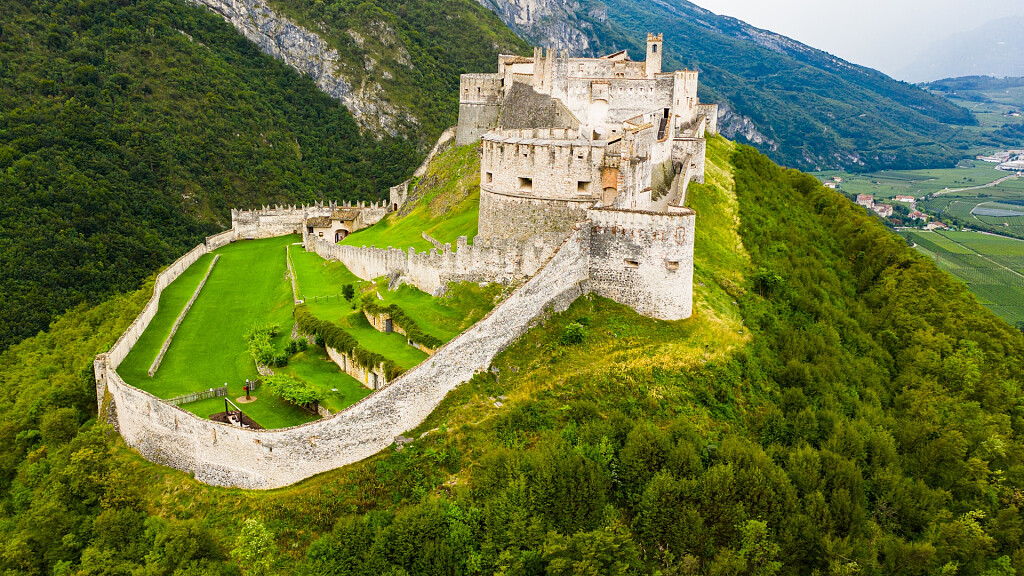
Castel Pietra in Calliano.
Castel Pietra is a corner of the Middle Ages where time has really stopped. Guided tours immerse the visitor in an ancient environment developed around the ancient 12th-century tower. Recent restoration interventions have provided for new tour routes inside the fortress that only Napoleon was able to conquer. Leaving the unique style of the Castle unchanged, environments have been created and equipped that make it possible to organize events of any kind.
Castel Noarna in Noarna di Nogaredo.
Probably born as a fortification in Roman times, Castel Noarna has dominated Vallagarina since the 11th century. Its cellar produces around 35,000 bottles every year.
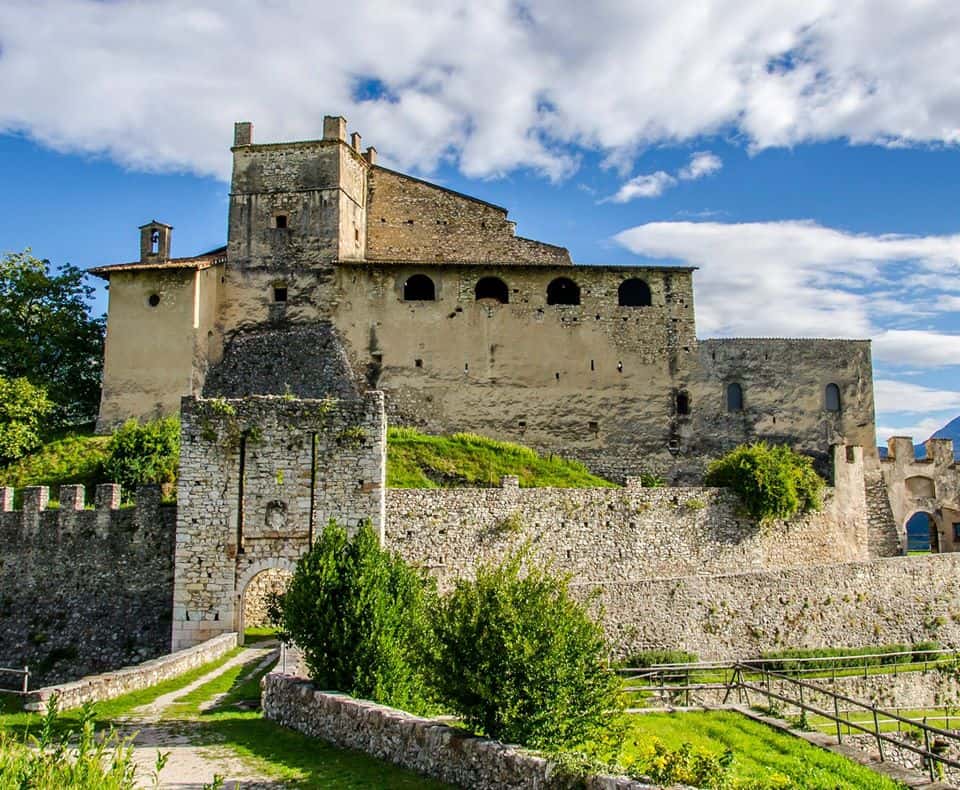
Rovereto Castle and the War Museum.
The War Museum is housed within the fifteenth-century castle of Rovereto which, with its sturdy walls and mighty bastions, represents a unique example of a Venetian fortress in Trentino. Thanks to the recent restoration works, in addition to the spaces that house the museum, it is now possible to visit the Marino and Malipiero towers where the collections of weapons from the prehistoric, medieval and modern ages are exhibited. In addition, the tunnels and the embankment that lead to the discovery of the numerous gunboats carved into the walls are now also accessible. The visit to the Castle is included in the entrance ticket.
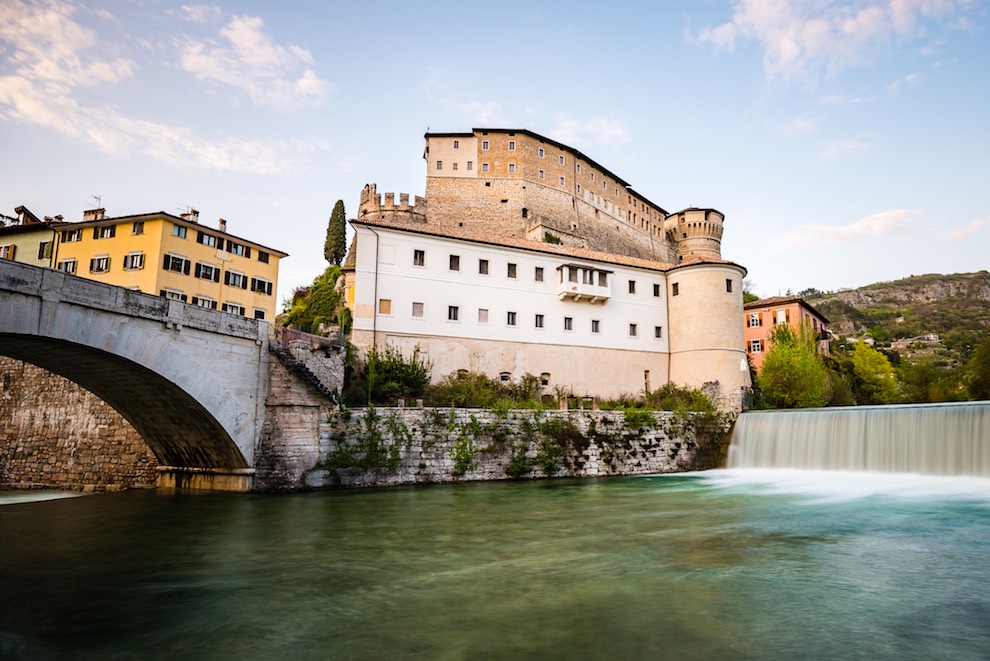
The Castle of Avio.
This castle stands on the top of a spur of Monte Vignola, overlooking the Val Lagarina. It consists of a majestic circuit of towers and crenellated walls in a fortress complex conceived for strategic control of the Adige valley, but also a treasure trove of a luxuriant garden and precious and lively “Giottesque” pictorial cycles dedicated to love and war .
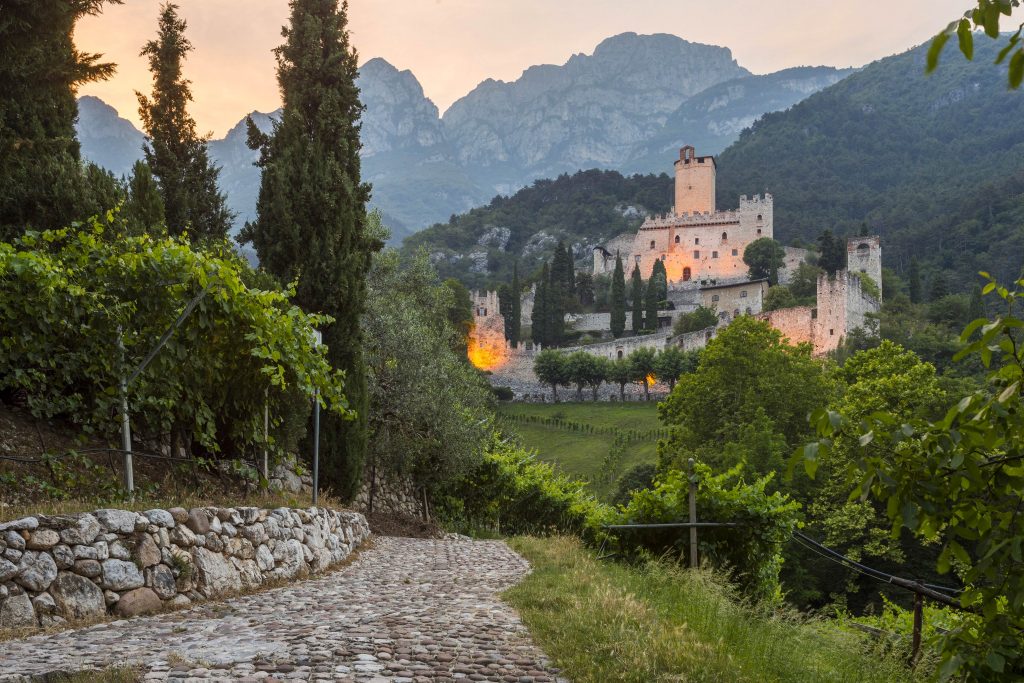
Hotels – Restaurants – Experience on Lake Garda.
On Lake Garda there are many facilities in which to stay, from small and well-kept B&Bs to resorts with wellness centers and beauty services. In the section dedicated to hotels on Lake Garda, you will find all the information you need to find the most suitable accommodation for you.
The same goes for restaurants, at this link you will find our selection of restaurants on Lake Garda. Remembering that Lake Garda offers several starred restaurants and the quality of the culinary offer is very high.
There are many activities and experiences you can do on Lake Garda, so we recommend that you visit the section dedicated to experiences in our magazine by clicking here.
For any questions about Riva del Garda or about your holiday on Lake Garda, do not hesitate to contact us by commenting on this article or by writing on our social channels (Instagram, Facebook, Twitter, TikTok), we are always available to help you.
I greet you with a Hungarian proverb that goes like this: “My house is my castle”. And in my opinion the secret lies precisely in this: material goods come and go and the key is not to depend too much on them. We build our “castles” well understood as relationships with the people we love, cultivating and respecting them without taking them for granted, and every house we own will truly be a palace.
See you next time dear Outdoors!
Silvia Turazza – Garda Outdoors editorial staff
